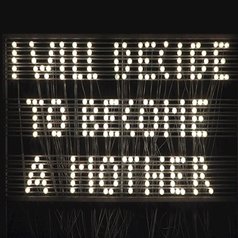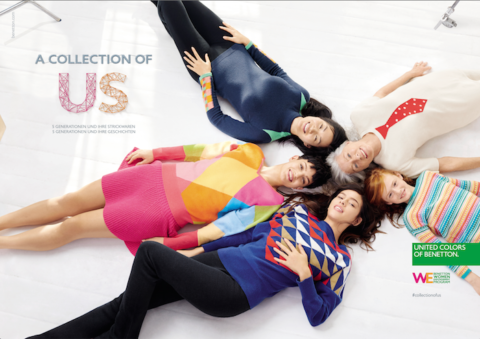Fabrica – 12 Creative Months In Treviso
By Catarina Wilk
“Fabrica has challenged people for over 20 years, not only the audience who confronts an image, but it also challenges us as Fabricanti to create it. Fabrica has been known for being edgy and punchy, and having new students coming in on a regular basis keeps ideas and fresh views flowing.“ – Karen Oetling, Fabricanti
This quote by one of Fabrica‘s brilliant students summarises the communication research centre’s DNA and philosophy perfectly.
To start off, we go back to the year 1994 – the year of birth of Fabrica – when Luciano Benetton’s idea of supporting young outstandingly talented creatives in order to make them able to live their dreams became real by offering a one-year scholarship, an accommodation as well as round-trip ticket to Italy.
Based in beautiful Treviso in the Northeast of Italy, Fabrica can be described as the epicentre of creativity with a long and successful history since its establishment. As part of The Benetton Group, Fabrica is a communication research centre which aims in educating young talents regardless of origin in different disciplines such as design, visual communication, photography, interaction, video, music as well as journalism.

Garden and Front of the Ancient Villa Pastega
So what makes Fabrica’s concept so unique and different?
First of all, Fabrica is not the usual type of school; it is more than that!
In short, “there are no annual courses, times schedules or programs, students are invited here directly for a period of twelve months”.
Speaking of Fabrica’s students, the so-called Fabricanti, all of them are greatly talented. After having passed a “rigorous screening process”, the students get the chance to work on personal projects and get access to the latest technology if required for working on their individual projects.
In this respect, .Cent Magazine is delighted to feature three Fabricanti who share a couple of highlights of their remarkable work along with a few words that sum up their individual projects as well as a short statement about their personal experiences at Fabrica.
CHRISTIAN COPPE – EDITORIAL AREA
I came to know about Fabrica some years ago. It seemed to me it was an incredibly creative and exciting environment and I immediately wanted to be part of it. I had studied multimedia sciences and technologies and I applied for the video area. In Fabrica I have had the opportunity to experiment a lot in my field, in particular by creating 2D and 3D video contents.
Moreover, in Fabrica you get in touch with people with different skills and this is what I like most: you can learn from the others, mix your know-how with theirs and create bigger, much more challenging projects.
This is how “Night(e)scapes” was born: it is a multi-media project, the result of a cooperation between me and two other Fabricanti, Martina Cirese (photographer) and Geremia Vinattieri (musician).
The idea behind the project was to explore Italy through sounds, and not only images, in order to achieve a unconventional representation of a country we think we know pretty well, while it has a lot that hasn’t been discovered yet.
The first part of the project was actually developed by Martina and Geremia alone: they visited renowned and less renowned sites in Italy, such as Venice, Naples, Matera, Craco (these last two in Basilicata, in the south of Italy) and Langhe (in Piedmont, North of Italy). Martina took pictures and Geremia recorded ambient sounds, mostly at night, when noises are purer and easier to pick up.
After this journey from north to south of Italy, they came back to Fabrica for the post-production, and this is when I was involved in the project.
Our idea was not to only connect images with sounds, but to animate the images in order to create some short videos. After having selected the material, I combined sounds with photos with After Effects. I used a technique called “camera projection”, which stresses the image depth. The visual effects match the sound track elaborated by Geremia.

Nightescapes_Craco by Christian Coppe
Night(e)scapes – Craco from Fabrica on Vimeo.

Nightescapes_Langhe by Christian Coppe
Night(e)scapes – Langhe from Fabrica on Vimeo.

Nightescapes_Matera by Christian Coppe
Night(e)scapes – Matera from Fabrica on Vimeo.
DANIEL ROUS – DESIGN AREA
My name is Daniel Rous and I am a product designer from the UK, born in 1990 a 2013 graduate from Bath Spa University. Since graduating I have worked in various practices between London and my hometown of Oxford. In November 2014, I joined Fabrica as a resident product designer. Since joining, I have worked with Fabrica on projects for Airbnb, Daikin, the Italian Makers Village and EXPO Milano 2015.
For me, the best objects are simple — they present themselves in such a way that anyone could find a function within them. When you see them out of the corner of your eye, you feel drawn to them.
As a designer my goal is to create functional objects which respond to basic needs. I work through ideas in a logical rhythm, striving to uncover hidden qualities that are sometimes felt rather than understood, bringing a sense of rightness that makes the object special. Working directly with materials, the physical nature of making models and prototypes brings a particular energy to the project. By relentlessly looking at an object, turning, rotating and rolling them over I begin to understand them better. Adopting this way of observing is integral to the way the work develops.
I still find challenges in the most rudimentary projects. Each has its own unique problems that need to be overcome. As an example, designing a humble carafe poses its own set of interesting challenges. I find it important to be in a situation where I forget what I have learnt in the past, thinking of a material or a process in a new way, and using that as a starting point to explore.
My first piece of mass-produced furniture, in collaboration with Italian furniture maker Piaval, was a café style chair. It was designed specifically for the Half Three café at 100% Design during the London Design Festival 2015. My end goal was to create a simplified, modern take on a traditional café chair. Made entirely from beech, the chair is strong, comfortable and stackable. Keeping both functionality and comfort in mind, the back of the chair wraps around and transforms into the back legs — overall it has an underlying understatement and detailing which invites a tactile and thoughtful interaction.
KAREN OETLING – SOCIAL CAMPAIGNS AREA
I’m Karen Oetling, originally from Guadalajara, Mexico. I studied BA Design, it was a bachelors degree based on the Bauhaus with a lot of hands on work, with a broad and multidiscipline approach, which I have been mixing with art, painting since I was very young. I tend to react towards Design with an artistic intention.
I don’t particularly remember how I got to know about Fabrica’s existence (Colors and Unhate campaigns most likely), but it was in my mind even before starting university. I wanted to come in order to collaborate with people from all over the world, research and experiment, do crazy and abstract projects with a social twist, learn Fabrica’s unconventional and powerful punch for communication. I wanted to work in projects similar to MOHS album where inspired by a scientific scale of minerals, a crazy instrument was created in collaboration with students from Design, Interactive and Music.
Fabrica has challenged people for over 20 years, not only the audience who confronts an image, but it also challenges us as Fabricanti to create it.
Fabrica has been known for being edgy and punchy, and having new students coming in on a regular basis keeps ideas and fresh views flowing.
Social Campaign is about creating strong and powerful projects that face us up to situations of discomfort, discrimination, violence and inequality, invites to question, and raise awareness.
To keep up the original approach is about finding a balance between doing the enough research to know what has been done and what is going on, but not too much, because then you end up doing something similar without being aware of it.
In Fabrica we learn to push ideas by questioning them from different angles and perspectives, keeping in mind that they need to be global, so they have to be simple enough for everyone to understand, while not losing their power.
We come from different backgrounds, not only in a professional level but also in a personal one, which gives to every brief ideas and approaches completely different. Fabrica is a clash, that becomes a blend, of ideas and people.
Social Campaign is very multiethnic, having colleagues from Cuba, Hong-Kong, Venezuela, Dominican Republic, Mexico and Italy; each one with different skills and ideas, which allows us to take an idea and create a project completely in-house. You have everything you need inside, from people to equipment, and especially time.
I was particularly involved in “Facing”, an art project that talks about acid attacks. It was a very interesting and creatively challenging project. I think it portrays Fabrica’s multidisciplinary (art, photo and video) spirit.
This project shows that “special twist” that Fabrica is known for. In this case, towards a strong topic such as acid attacks, we found a solution of using this harmful substance in an opposite way, creating beauty instead of destroying it. The big art pieces draw in the audience, inviting them to get closer and later on present them a social issue of relevance, alongside the testimony of Iram Saeed. The project was shown in a collateral event in 56th Venice Biennale, OpenArt in Örebro and is heading to Avesta Art in Verken, Sweden.
I originally conceived “For the disappeared” as a temporary art installation within Fabrica’s ground. In November 2014 there was a national protest going on in Mexico for the 43 students that disappeared in September. Being so far away, I wanted to be part of it somehow, join my people. FABRICA doesn’t only gives me the freedom of taking the time to do art, but it is actually part of my work within Social Campaign, to protest and talk about a social issue. In 2015 the project developed into a performance, with over 50 students from Venice, who joined in solidarity to a situation that might have happened far away, but is moving to them being students as well. It was a way of expressing solidarity to those students that are repressed anywhere in the world.

For the disappeared by Karen Oetling
The collaboration between departments enriches Fabrica and its Fabricanti. I was able to work with two students from the Interaction Design area, and create the project “Water Culture”: we participated and were awarded the first prize in a competition launched by Design for Change / Lille, which invites design schools to develop innovative solutions to improve the quality of life of Lille’s residents. We, coming from Australia, India and Mexico, brought our local perception from our faraway culture, towards a local situation: rain. The concept aims, through water color changing shelters, to generate a positive attitude towards rain.
All in all, these three examples clearly show that supporting and encouraging young creatives is a matter close to Fabrica’s heart. Without any doubt, Fabrica’s concept paves the way for interesting, innovative and fantastic projects.
Fabrica aims to inspire a specific creative category of young “social catalysts” who, at the end of their experience at the centre, will continue their work independently.











